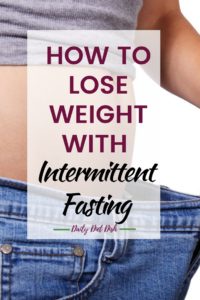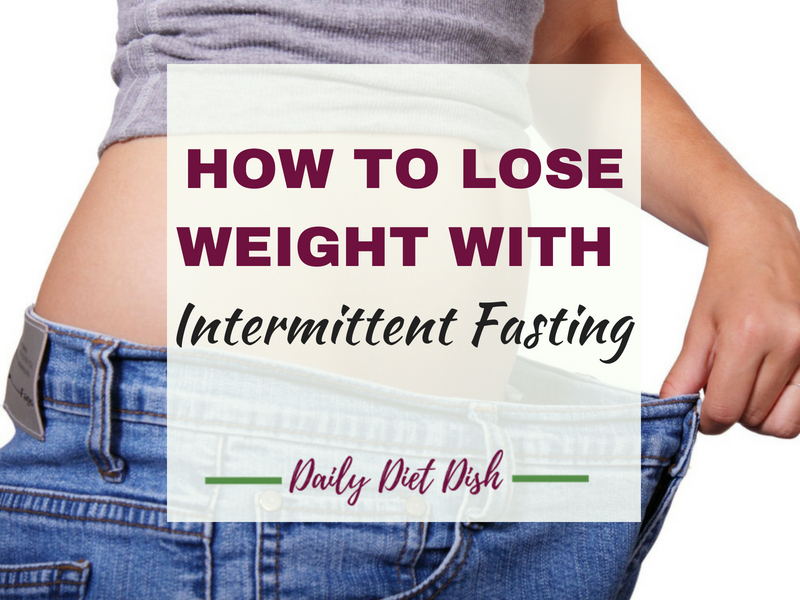Intermittent fasting is a great way to supplement your current lifestyle and accelerate weight loss without any major changes. When I first heard this term, I thought it was another fancy method for self-inflicted starvation. So if you’re thinking the same thing, rest assured that it’s not.
So what IS intermittent fasting?
Intermittent fasting is not a diet, but rather an eating pattern. It means that you choose to eat your meals during your chosen time frame and then fast for a specified time before your next meal.
So you’re not changing what you eat, just when you eat it.
There are a couple of reasons why people do this:
1- It’s easier than dieting. It doesn’t require you to clean out your pantry or go on a diet. You can think of it as ‘missing breakfast’ and you’ve already started. You’ll have your lunch and dinner, go to bed, and then miss breakfast (or any meal of your choice) the next day, etc. Low maintenance, right?
2- It’s a good way to consume fewer calories because instead of eating for 24 hours, you’ll only be eating during a specific time frame. You can eat whatever you want, or however many times you want during your feast.
Please be aware that while you can get the benefits of this, you won’t be successful if you decide to eat 2 pizzas and 10 pounds of candy every day. Still, try to be as healthy as possible.
3- Intermittent fasting can help you to lose weight because you’re approaching fat loss from both fronts- eating less while burning more stored fat. During the fasting period on an intermittent fast, the body will begin to burn more stored fat for energy.
4- It’s a great way to time your meals to ensure that they are being stored and used effectively. When we eat often, especially if we eat a high carb diet, there’s always a store of glycogen on hand for the body to use. This doesn’t encourage it to burn fat that’s already there.
5- It can extend your lifespan. Studies show that intermittent fasting can help to increase your lifespan in the same way that your body finds a way to extend your life during starvation. In other words, your body has mechanisms in place that are activated due to intermittent fasting, so you can reap the benefits without actually starving.
More Weight Loss Articles:
- 101 No Carb Foods for Weight Loss
- 3 Safe and Natural Ways to Lose Weight
- Top 7 Habits for Successful Weight Loss
Feasting vs Fasting

For the purpose of this article, we’ll define ‘feasting’ as the period when you’ll be eating, and ‘fasting’ as the period when you’re not eating. Your body operates differently in both periods.
During the feast (this sounds so medieval, but bear with me), your body will be digesting and absorbing the food for a few hours. Because it has that fresh fuel, your body will be using it to burn energy instead of stored fat.
It’s important to ensure that you eat enough food during this period- bigger meals than you normally would- because you want to ensure that your body is still getting the calories it needs.
During the fast, your body isn’t digesting or absorbing food so it will most likely burn stored fat for energy. This is when weight loss will happen.
But how long should you actually fast?
Intermittent Fasting Periods

There are different protocols that you can choose, or you can simply choose hours that fit your lifestyle and needs. The most common options, however, are listed below.
1- The 16/8 hour protocol where you eat within an 8-hour window and fast for the other 16 hours. It doesn’t matter when you choose your 8-hour window. It could be 8 am to 4 pm or from12 am to 8 pm.
This change from a regular eating pattern to intermittent fasting can be a bit too much for a beginner. So you can start out by eating within a 10-hour window, then fasting for the next 14 hours. You can gradually increase to 16 hours, or even 24.
2- The 24-hour protocol is just that- a 24 hour period without eating. For example, you’d have a regular day of eating that maybe ends with dinner at 8 pm. You’d begin your fast after dinner and go until 8 pm the next day. You could do this for one day every week, most likely on a day when you’re sedentary.
3- Alternate Day Fasting where you fast every other day. Some versions allow for 500 calories during fasting days. I find this method to be unsustainable for beginners, so you can choose to skip every other meal, or stick to your variation of the 16/8 hour protocol.
The Biggest Barriers to Intermittent Fasting
It’s hard to give up an entire meal every single day. But the thing is, once you begin to practice, it becomes a habit just as much as your current eating patterns. Do you realize that you generally eat around the same time every day?
It’s the same for intermittent fasting. As we mentioned earlier, you can start off small and work your way up. But aside from the mental barriers, here are some other things that you’ll likely encounter.
1- You’ll want to try eating bigger meals consistently and this might be a problem. It does take a bit of prep to ensure that you’re getting all your calories, especially your protein and your vegetables. You’ll probably have to cook and ensure that you’re being consistent in eating enough at each meal. As we said, you’re not starving yourself.
2- You may end up losing weight even if that’s not your goal. If you are thinking of doing a 24 hour fast or any of the longer fasting periods, then it’s going to be a bit difficult to eat as much during your feasting period.
But the perhaps the biggest challenge that you’ll face if you decide to try intermittent fasting is dealing with hunger.
Remember that your body is used to getting food at a particular time, so if you used to eat every 3 hours, you’ll probably start to get those signals from your body around that same time. You’ll experience less of these once you start training your body differently. But until then…
How do I deal with hunger during fasting periods?

There are a couple of options that you can consider to make your fasting period more bearable.
The first thing to consider is that if you are unbearably hungry during a long fast, you may want to shorten it. I’ve read personal stories of women who prefer a 10 hour feasting period, rather than longer times of 16 to 24. That said, it’s best to listen to your body and do what works for you.
The other ways that you can approach hunger are:
- Drink water
- Have some green tea. This can help to suppress your hunger
- And yes, you can have coffee. Black coffee with zero calories is best.
Who is Intermittent Fasting NOT for?
Intermittent fasting may have different effects on your body if you have any health conditions such as diabetes, any blood sugar problems, hypoglycemia, etc.
It’s also not recommended to do intermittent fasting if:
- You’re pregnant
- You’re new to the diet and fasting world
- You have a history of eating disorders
- You have chronic stress or fatigue
- You have sleeping issues
In general, this is information for persons who are interested in IF but you should still get your checkup, speak to your doctor, and track your results if you decide to try it out.

Quick Start Tips
It’s a generally accepted principle that if you want something to be successful and stick around as a habit, you should start small.
So the first quick start tip is to start small.
It makes no sense to dive headfirst into a 16 hour fast if you’ve never done it before, only to hate it and miss out on something that could give you so many wonderful benefits.
Give yourself an adjustment period and be patient with your body.
Secondly, calories are not created equally, so you should try to eat wholesome, nutrient-dense foods at every meal.
Finally, stay hydrated. Drink lots of water and also some green tea to help suppress your appetite.
I hope you found this introductory guide to intermittent fasting helpful.
Here are some more posts that you can check while you’re here:


Thanks for explaining! I’ve heard this term quite a bit over the past several months, but hadn’t really looked into what it entails.
Hey Joi, I’m happy that you found it helpful. 🙂